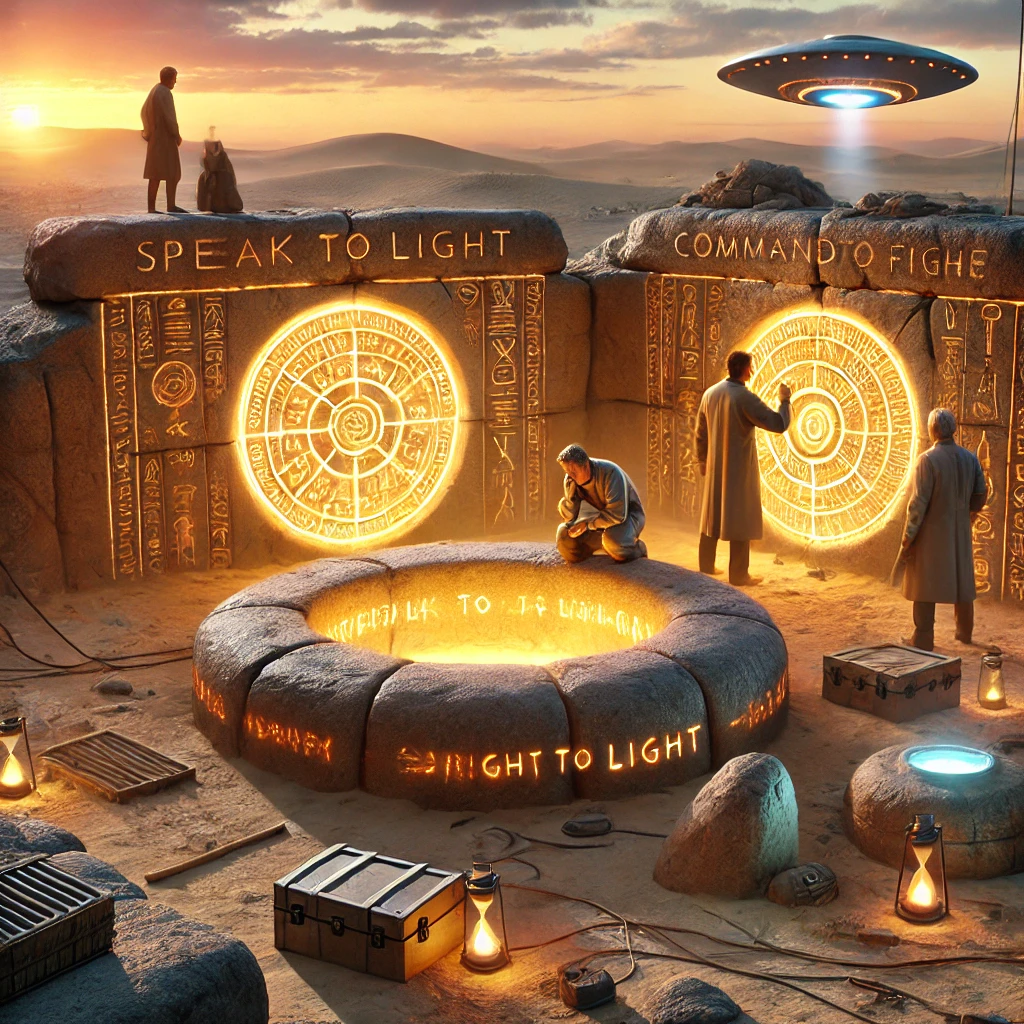Spring Equinox and the Ancient Alien Connection
As the days grow longer and the snow melts away, humanity prepares for the spring equinox—a time of balance, renewal, and, apparently, extraterrestrial farming advice. Across the world, ancient civilizations built astonishingly precise monuments that align perfectly with the sun on this day. Historians claim these were merely primitive calendars, but let’s entertain a more exciting possibility: were these sites actually meeting points where ancient astronauts dispensed agricultural knowledge?
Stonehenge, Chichen Itza, and the Galactic Almanac
Take Stonehenge in England. Its massive stones, arranged with baffling precision, align exactly with the rising sun during the equinox. This suggests an understanding of celestial mechanics far beyond what prehistoric humans should have known—unless, of course, they had guidance.
Then there’s Chichen Itza, the famous Mayan city where the Temple of Kukulkan becomes a cosmic spectacle on the equinox. As the sun sets, shadows form the illusion of a serpent slithering down the pyramid’s steps, symbolizing Quetzalcoatl, the feathered serpent deity. While mainstream scholars argue this was a religious symbol, others suggest it was actually a countdown clock for an annual extraterrestrial check-in.
The Great Sphinx of Giza also faces directly toward the rising sun on the spring equinox. Why would the ancient Egyptians design such an alignment? Was it a symbolic gesture of rebirth and renewal, or was it something more? Could it have been a cosmic timestamp, signaling when to begin planting crops based on interstellar instructions?
Were Ancient Gods Just Galactic Agronomists?
Throughout history, numerous civilizations credited their knowledge of agriculture to the gods. But what if these gods weren’t divine at all? What if they were highly advanced intergalactic agronomists ensuring that humans didn’t mess up their first harvests?
Ancient texts are filled with stories of sky beings delivering seeds, tools, and wisdom—from the Sumerian god Enki teaching irrigation to the Dogon tribe of Mali, whose astronomical knowledge of Sirius baffles researchers to this day. Even the biblical Book of Enoch describes celestial beings descending to Earth and teaching humanity skills, including agriculture. Were these divine messengers actually part of an interstellar outreach program, making sure Earth contributed to some galactic food co-op?
A Galactic Crop Experiment?
Agriculture appeared suspiciously simultaneously across different regions of the world. Conventional history claims this was the result of independent discovery, but skeptics might argue otherwise. If Earth was part of an early planetary farming experiment, it raises questions:
- Were early humans given a “starter pack” of seeds and knowledge?
- Did ancient astronauts return yearly to check on the harvest?
- And most importantly—what were they growing it for?
It’s possible that the spring equinox marked the annual progress report for this planetary project. While farmers saw it as a time to plant, their extraterrestrial benefactors may have seen it as an opportunity to monitor Earth’s output and efficiency.
Are We Still Following an Ancient Cosmic Contract?
If Earth was part of a galactic agricultural experiment, the bigger question is: is it still happening? While modern farming relies on advanced technology, some traditions remain suspiciously ancient. Many planting rituals, farmers’ almanacs, and seasonal festivals still align with the equinox, despite modern science making these traditions “unnecessary.”
Could this mean that humans are still unknowingly following interstellar instructions? Is our food supply part of a larger cosmic trade network? And if so, who—or what—are we feeding?
So, when you plant your spring garden this year, ask yourself—are you simply honoring ancient human traditions, or are you unknowingly participating in an ancient, intergalactic farming contract that began millennia ago?
🚨 POST-ARTICLE WARNING 🚨
If you suddenly feel the urge to plant crops at an astronomically perfect time, congratulations—you may be part of an ancient alien farming contract. Hope you like intergalactic agriculture! 🌾👽🌞


